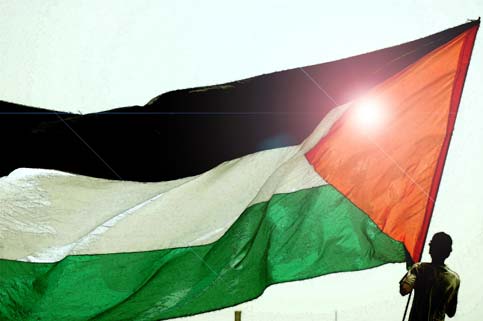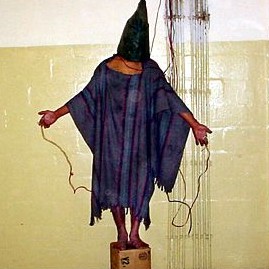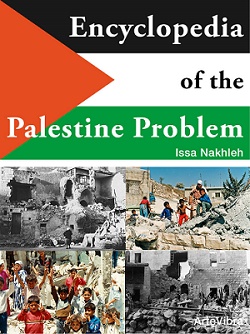http://www.ahram.org.eg/weekly/2001/528/re3.htm
Al-Ahram Weekly On-line,
5 - 11 April 2001,
Issue No.528
Vale of tears
Tear or poison gas? Jonathan Cook, in the West Bank, investigates
evidence of a new war crime
The school playground in the village of Al-Khader, near Bethlehem, has
been a children's battleground for the past six months: pupils finish
classes at midday and congregate to throw stones at the Israeli
soldiers stationed in the hills around their homes. The confrontation
was relatively trouble-free until last month when soldiers fired tear
gas into the playground. One canister landed only a few feet from
13-year-old Sliman Salah, enveloping him in a cloud of gas described
by witnesses as an unfamiliar, yellow colour. Within a minute he was
unconscious.
By the time Salah arrived at the private Yamamah hospital, his body
was racked by violent spasms and convulsions, his breathing was
sporadic and his pupils tightly constricted. The French doctor who
admitted him was baffled. Annie Dudin, a paediatrician who has worked
in the West Bank for 15 years, has treated dozens of victims of gas
inhalation, including many between 1987 and 1993, during the first
Intifada, but had never seen symptoms like Salah's before.
Normally, victims recover after a few minutes away from tear gas. In
more severe cases, oxygen and an injection of glucose may be needed to
stop coughing fits and dry up streaming eyes. Neither treatment worked
with Salah. His seizures continued until he was given large doses of
anti-convulsants and only slowly did he regain consciousness.
"I have seen nothing like this before," Dudin said. "I would have
expected these sorts of symptoms in a case of severe poisoning. But to
treat him properly, I needed to know what chemicals he had been
exposed to." Later that day, Salah was transferred to Hussein Hospital
in nearby Beit Jala, to be put under the care of neurologist Nabir
Musleh. Tests suggested that the boy had been poisoned, but doctors
again had no idea how to treat him. They told him to shower regularly
to wash away any chemical traces on his skin.
Within 24 hours of his release, Salah was having convulsions and had
to be readmitted to the Hussein. His symptoms were finally brought
under control five days after his exposure to the gas. But Salah's
father says the boy is still suffering from stomach pains, vomiting,
dizziness and breathing problems.
Salah is just one of a spate of such cases in the Bethlehem area in
the past month. Another tear gas victim recently arrived unconscious
at the Yamamah having convulsive fits and Hussein Hospital has
reported a rapid increase in untreatable patients since the first such
case was admitted in late February.
Peter Qumri, the hospital's director, said: "Until a few weeks ago it
was simple to help tear gas victims. We gave them oxygen for 10
minutes and then discharged them. Now they arrive having fits, dizzy,
sometimes unconscious, having severe problems breathing. Something has
definitely changed."
The new cases in Bethlehem follow a pattern first seen in the Gaza
Strip in mid-February, when a large crowd was tear-gassed near Khan
Younis refugee camp. Ten men were admitted to Nasser Hospital
suffering from seizures that doctors could not treat. Many other
patients vomited for days afterwards.
Because of Israel's strict blockade of Gaza, the cases were difficult
to verify at the time. But local Palestinian doctors raised concerns
that Israel might have started using a new, concentrated form of tear
gas or combining different gases.
The Israeli Defence Force says it uses only standard CS gas, although
it admits that in some clashes it has also used smoke screen gases to
protect its soldiers. It believes the victims' complaints are caused
by "anxiety." That conclusion has been dismissed by doctors, including
one of the few Western medics in the Gaza Strip. Helen Brisco of
Médecins Sans Frontières, says the Khan Younis patients she treated
were clinically ill and that in the more serious cases, patients had
severe muscle paralysis.
Brisco's and Dudin's observations are supported by an investigation
carried out by the Palestinian Ministry of Health, which took air
samples at Khan Younis as well as blood samples of patients. Its
preliminary findings suggest that Israel used a cocktail of gases in
much higher concentrations than before.
Dudin is also sceptical of Israel's explanations. "Sliman's condition
was certainly not one of anxiety. It is very difficult for me to say
what he was exposed to. Without knowing the chemicals involved, I
cannot run the necessary tests, but his symptoms were compatible with
exposure to a strong poison. This suggests to me that the gas being
used by Israel is no longer safe."


































